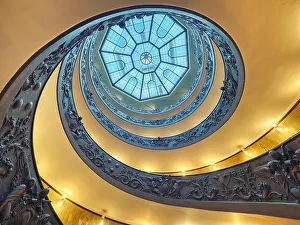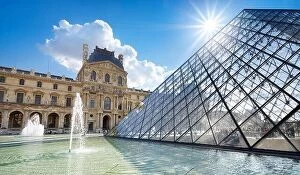Museum Architecture Collection
Museum Architecture: A Journey Through Innovation and Design Museums have long been regarded as guardians of knowledge
For sale as Licensed Images
Choose your image, Select your licence and Download the media
Museum Architecture: A Journey Through Innovation and Design Museums have long been regarded as guardians of knowledge, preserving history and culture for generations to come. However, beyond their invaluable collections, these institutions also boast remarkable architectural marvels that captivate visitors from around the world. One such masterpiece is the Bramante Staircase. Located in the Vatican Museums, this double helix structure allows people to ascend without meeting those descending. Designed by Donato Bramante in the early 16th century, it exemplifies ingenuity and elegance. Its spiral form not only provides a functional solution but also creates an enchanting visual experience for museum-goers. Moving across continents to Paris, we encounter another iconic architectural gem - the Glass Pyramid at the Louvre Museum. Designed by renowned architect I. M. Pei, this modern addition seamlessly blends with its historic surroundings while making a bold statement of contemporary design. The pyramid's transparent facade invites natural light into the underground space below and serves as a striking entrance point to one of the world's most celebrated museums. These examples highlight how museum architecture has evolved over time to enhance both functionality and aesthetics. Architects continually push boundaries to create spaces that inspire awe and curiosity within visitors. In recent years, there has been a growing trend towards incorporating innovative designs that harmonize with existing structures while adding unique elements of surprise or intrigue. From sleek minimalist facades to avant-garde shapes that challenge traditional norms, museum architecture continues to evolve as an art form itself. Beyond their exterior beauty lies an equally important aspect – interior design. Museum layouts are carefully planned to guide visitors through exhibits seamlessly while ensuring optimal viewing experiences. Cleverly designed pathways lead us on curated journeys where each step reveals new wonders waiting to be discovered. Moreover, architects strive for sustainability in their designs by integrating environmentally friendly features like energy-efficient lighting systems or green roofs that blend harmoniously with surrounding landscapes.


